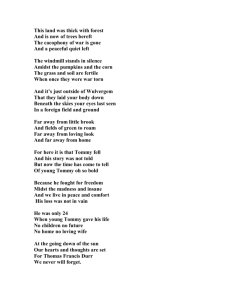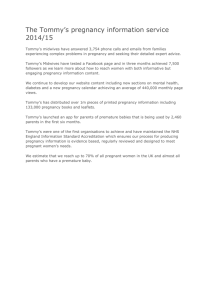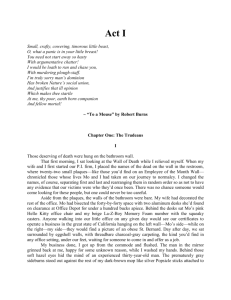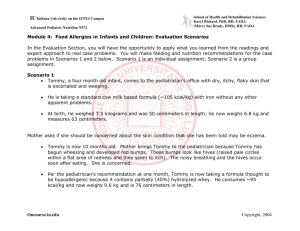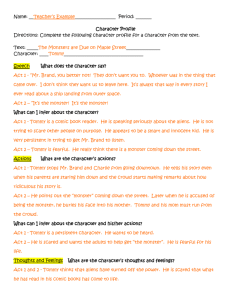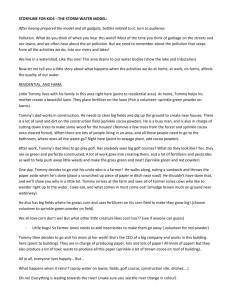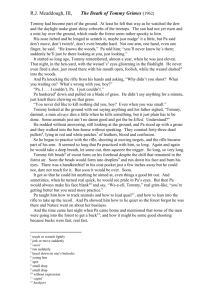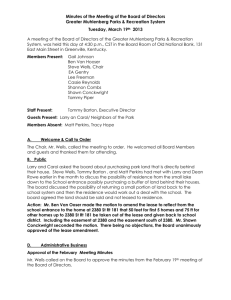Nursing 203 Theory Case Studies - NC-NET
advertisement
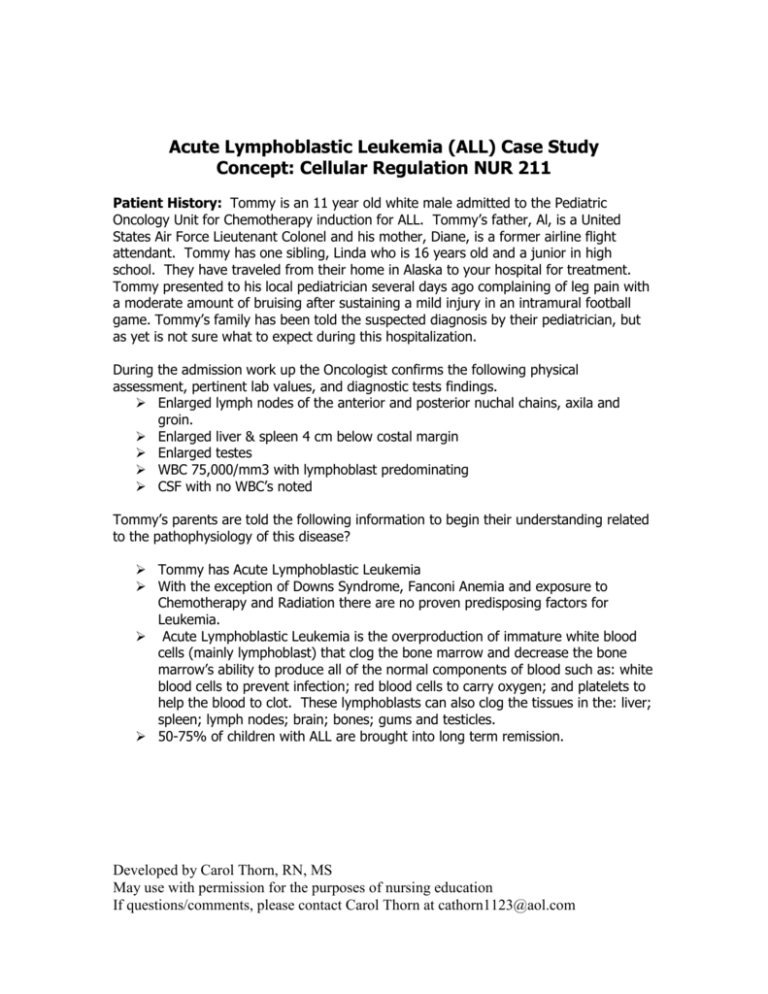
Acute Lymphoblastic Leukemia (ALL) Case Study Concept: Cellular Regulation NUR 211 Patient History: Tommy is an 11 year old white male admitted to the Pediatric Oncology Unit for Chemotherapy induction for ALL. Tommy’s father, Al, is a United States Air Force Lieutenant Colonel and his mother, Diane, is a former airline flight attendant. Tommy has one sibling, Linda who is 16 years old and a junior in high school. They have traveled from their home in Alaska to your hospital for treatment. Tommy presented to his local pediatrician several days ago complaining of leg pain with a moderate amount of bruising after sustaining a mild injury in an intramural football game. Tommy’s family has been told the suspected diagnosis by their pediatrician, but as yet is not sure what to expect during this hospitalization. During the admission work up the Oncologist confirms the following physical assessment, pertinent lab values, and diagnostic tests findings. Enlarged lymph nodes of the anterior and posterior nuchal chains, axila and groin. Enlarged liver & spleen 4 cm below costal margin Enlarged testes WBC 75,000/mm3 with lymphoblast predominating CSF with no WBC’s noted Tommy’s parents are told the following information to begin their understanding related to the pathophysiology of this disease? Tommy has Acute Lymphoblastic Leukemia With the exception of Downs Syndrome, Fanconi Anemia and exposure to Chemotherapy and Radiation there are no proven predisposing factors for Leukemia. Acute Lymphoblastic Leukemia is the overproduction of immature white blood cells (mainly lymphoblast) that clog the bone marrow and decrease the bone marrow’s ability to produce all of the normal components of blood such as: white blood cells to prevent infection; red blood cells to carry oxygen; and platelets to help the blood to clot. These lymphoblasts can also clog the tissues in the: liver; spleen; lymph nodes; brain; bones; gums and testicles. 50-75% of children with ALL are brought into long term remission. Developed by Carol Thorn, RN, MS May use with permission for the purposes of nursing education If questions/comments, please contact Carol Thorn at cathorn1123@aol.com The Medical Treatment Plan for Tommy will include: Aggressive Treatment with the following chemotherapeutic agents since Tommy is in the high risk category related to his age, initial WBC Count and degree of hepatosplenomegaly. 1. Vincristine IV, weekly x 4 weeks 2. Prednisone PO, daily x 28 days 3. Asparaginase IV, 3 times weekly x 3 weeks 4. Adriamycin IV, weekly x 4 weeks 5. Cytosine Arabinoside on day 1 & Methotrexate on day 8 intrathecally Nursing Plan of Care: 1. Tommy is scheduled for a Bone Marrow Aspiration and his platelet count is 15,000. What are the important aspects of care for Tommy and his family related to this procedure? 2. Tommy’s parents ask you what complications to expect from Tommy’s ALL and its treatment. What are the key pieces of information to give them now? 3. You are planning the Chemo-therapy administration for Tommy. What are the usual patient complications/nursing concerns and the corresponding key interventions related Chemo-therapy administration? 4. Tommy’s sister Linda has read an article about Bone Marrow Transplantation. She asks you about whether she would be an appropriate candidate to be a donor for her brother. What are the key components of your conversation with Linda about this topic? 5. It has been a difficult induction for Tommy and his family. Tommy has experienced fevers of 103 to 104, and has had abdominal surgery for a suspected appendicitis that turned out to be lymphadenopathy. Tommy’s fever and pain are finally under control, and he asks you one day, in the presence of his parents, if he is going to die. What are the key components of your conversation with Tommy around this topic? Developed by Carol Thorn, RN, MS May use with permission for the purposes of nursing education If questions/comments, please contact Carol Thorn at cathorn1123@aol.com
